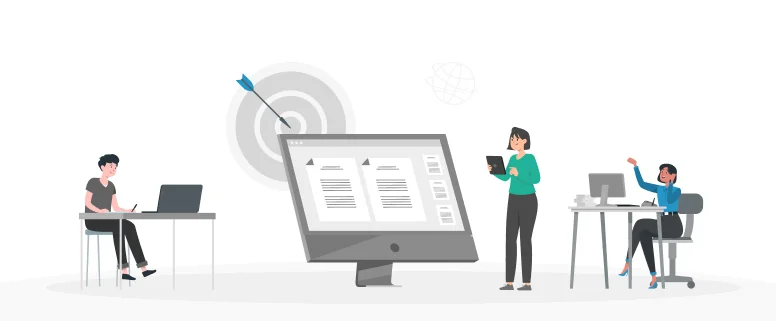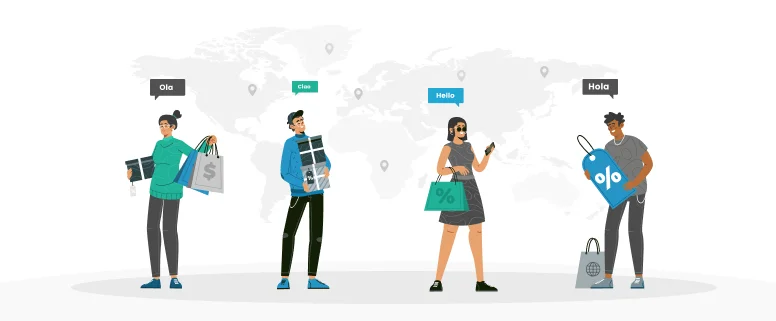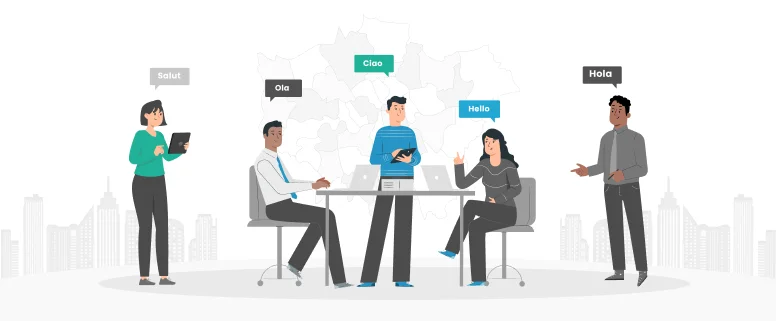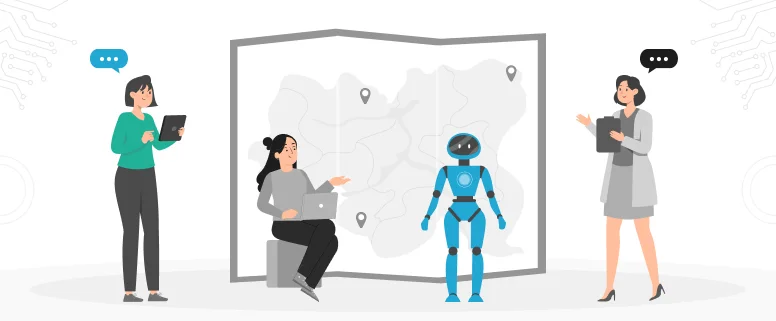As a translation and localization service provider, we know firsthand how critical language accuracy is—whether it’s for a multilingual marketing campaign or a clinical trial in a foreign country.
Transcriptions are mostly overlooked by clients who value linguistic precision.
Converting audio into written text is the first step before translation, subtitling, or voiceover. Yet despite advances in automated tools, the biggest challenge remains crystal clear: achieving reliable, contextually accurate transcripts.
In this article, we’ll explore why accuracy in transcription matters—especially when translation and localization are part of the workflow. We’ll break down the causes of transcription errors and show you how to enhance transcription quality to streamline your global content efforts.
What Is the # 1 Challenge in Transcription Services?
Accuracy Is Still the Elephant in the Room
A single misheard word can lead to major misunderstandings when that transcript is used for translation. When you translate a script where the original transcript mislabels a product name or technical term, it can lead to misleading localized content that damages your brand credibility.
Accuracy in transcription sets the tone for everything that follows—from subtitling videos to translating training modules for international teams.
Root Causes Behind Inaccurate Transcription
Let’s take a closer look at the key factors that commonly undermine transcription accuracy and lead to downstream translation issues.
Audio Quality Issues: Poor audio leads to unreliable transcription. If sound clarity is low, no amount of linguistic expertise will save the outcome.
Accents and Dialects: Global speakers come with diverse ways of pronouncing the same language. Automated systems often fail to recognize variations in multicultural markets.
Industry-Specific Jargon: Technical accuracy is key in sectors like healthcare, legal, finance, or e-learning. Without specialized knowledge, human transcribers can get it wrong.
Inexperienced Transcribers: In the rush to keep costs low, many services rely on generalists who aren’t trained to pick up contextual or linguistic nuances.
Speed-Over-Quality Mindset: Rushing transcription just to move on to the translation phase can compromise both stages of the process.
How to Solve the Accuracy Related Audio Transcription Challenges
As a localization partner, here’s how we guarantee transcription quality—so your translation outcomes never suffer.
1. Improve Audio Quality at the Source
Think of audio quality as the raw material. If it’s unclear or filled with background noise, the best transcribers (or AI tools) will struggle. Poor audio leads to missed words, misheard terms, and awkward sentence structures that ripple into the translation phase.
How we address it:
- We consult with clients before recordings are made.
- We recommend industry best practices—like using external microphones, quiet recording environments, and clear speech pacing.
- For remote sessions, we advise recording on local devices rather than low-bitrate video calls.
If you’re preparing materials for multilingual voiceovers, subtitles, or global team training, a clean recording helps every step that follows go smoother and faster.
2. Employ Domain-Specific Human Transcribers
Not all transcriptions are created equal. A generalist might be fine for a casual interview, but when you’re dealing with a pharmaceutical webinar or an international legal briefing, it’s a different ballgame.
Our approach:
- We match subject matter experts (SMEs) with the transcription job. For example, a legal linguist for court audio or a medical professional for clinical trial recordings.
- These experts are trained to understand and accurately render industry-specific jargon, acronyms, and speaker intent.
It reduces the risk of errors cascading into translation—where misinterpreting one term can result in incorrect subtitles, legal liability, or regulatory setbacks.
3. AI Transcription vs Human | Combining Both
While AI-powered transcription tools are getting better, they still fall short on nuance, speaker overlap, and cultural context—with regional dialects or technical content. But that doesn’t mean we ignore them.
What we do:
- Use AI tools for the first-pass draft where appropriate (especially with large volumes).
- Make sure a trained human linguist reviews and edits the AI-generated transcript, correcting terminology, formatting, and contextual flow.
It strikes a balance between speed and quality. You get a faster turnaround without sacrificing the human judgment that’s critical for preparing transcripts for global translation workflows.
4. Establish a Rigorous QA Process
Spell check won’t cut it here. Transcription QA requires both linguistic and contextual reviews.
Our QA checklist includes:
- Cross-checking transcripts against reference materials and glossaries.
- Confirming consistency in terminology, abbreviations, and speaker labeling.
- Cultural vetting before translation (e.g., making sure idioms or phrases won’t confuse target-language readers).
A flawed transcript can mislead translators, confuse voice artists, or lead to regulatory non-compliance in high-stakes sectors like pharma or law.
5. Train and Certify Transcribers Regularly
We don’t believe in a “one-and-done” certification. Just as language evolves, so do the expectations of global audiences.
Our training covers:
- Industry-specific vocabulary updates (e.g., new tech terms, evolving medical protocols).
- Style guide adherence for different clients and regions.
- Localization awareness—prepping transcripts that are easy to adapt culturally.
When your transcriptionist is also trained to think like a localizer, you reduce rework and speed up your international launches.
6. Set Realistic Deadlines and Expectations
Clients want transcription turned around quickly so the translation can begin. But here’s the truth: rushing transcription services almost always results in lower quality, which then delays translation anyway due to necessary revisions.
Our guidance:
- Encourage clients to allow time for review cycles and contextual checks.
- Provide realistic turnaround times based on content complexity and target use.
- Offer scalable teams for large, multilingual projects that can’t afford accuracy bottlenecks.
Taking an extra day to get the transcript right can save you weeks of post-translation correction and re-recording.
The Client’s Role in Improving Accuracy
Transcription accuracy is not just the responsibility of the service provider. Clients play a central role in setting the stage for success—especially when transcription is used as the foundation for translation and localization.
Provide Reference Materials to Eliminate Guesswork
Glossaries, brand style guides, technical manuals, and product names aren’t optional—they’re essential. Without these, experienced transcribers may misinterpret a term, especially in technical or branded content.
If your product is called “ThermoTrack™” and the transcriber writes “Thermal Track,” that error will carry into subtitles, voiceovers, and translated documentation—leading to diluted branding.
Tip: Include context files, speaker names, and acronyms to reduce ambiguity and increase transcription accuracy from the start.
Submit High-Quality Audio to Avoid Preventable Errors
The old saying holds true: garbage in, garbage out. Poorly recorded audio— overlapping dialogue or excessive background noise in transcription—makes accurate transcription significantly harder.
How clients can help:
- Use directional microphones and minimize background noise.
- Ensure speakers articulate clearly and avoid speaking over one another.
- Test audio setups before important sessions (especially for webinars or podcasts).
Clean audio speeds up transcription, reduces rework, and prevents critical terms from being lost or misunderstood.
Set Clear Expectations to Align with Localization Goals
Many clients treat transcription as a standalone task—but if the end goal is multilingual adaptation, that needs to be communicated upfront.
What to clarify:
- Will the transcript be translated, subtitled, or used for dubbing?
- Are tone, cultural references, or humor important to retain?
- Are there preferred formatting styles for dialogue, timestamps, or speaker IDs?
When your goals are clear, we tailor the transcription process accordingly—resulting in smoother localization workflows and fewer revisions.
The Future of Transcription: Faster and More Integrated
The transcription industry is evolving rapidly—and the implications for translation and localization are game-changing. Here’s what to expect in the near future:
Smarter AI Models for Greater Language Flexibility
AI-powered speech recognition is improving at breakneck speed. Newer models are becoming increasingly capable of handling:
- Diverse global accents and dialects
- Code-switching between languages in multilingual recordings
- Industry-specific terminology
For localization workflows, those involving global user-generated content, AI that understands a Nigerian-English accent or switches seamlessly between Spanish and English saves time and reduces the risk of initial transcription errors that affect translation accuracy.
Human-in-the-Loop Systems for Optimal Accuracy
Pure automation may be fast, but it’s not flawless. That’s why the future lies in hybrid workflows—where AI provides speed and humans provide context, tone, and cultural relevance.
What this looks like:
- AI creates the first draft of the transcript.
- A trained linguist edits and validates every word.
- The refined transcript flows directly into translation or localization tools.
It balances efficiency with precision—essential when transcripts serve as the base for multilingual content, training, or compliance documentation.
Integrated Localization Pipelines That Start with Transcription
Leading localization companies (like CCJK!) are moving toward end-to-end pipelines where transcription is no longer a standalone service but the first node in a connected system that includes:
- Transcription
- Translation
- Subtitling/voiceover
- Multilingual QA
Centralizing these processes eliminates handoff errors, improves turnaround, and guarantees consistency across languages. When transcription, translation, and QA are managed at one place, the entire localization workflow becomes cohesive and cost-effective.
Conclusion
In transcription services, accuracy is the basic requirement for successful translation and localization. Whether you’re planning a multilingual marketing campaign, launching a global eLearning platform, or preparing subtitles for foreign markets, it all begins with a correct transcript.
At CCJK, we treat transcription as the first step in your global communication strategy. With trained linguists, domain knowledge, and integrated QA, we make sure that your transcripts are ready for flawless localization.





